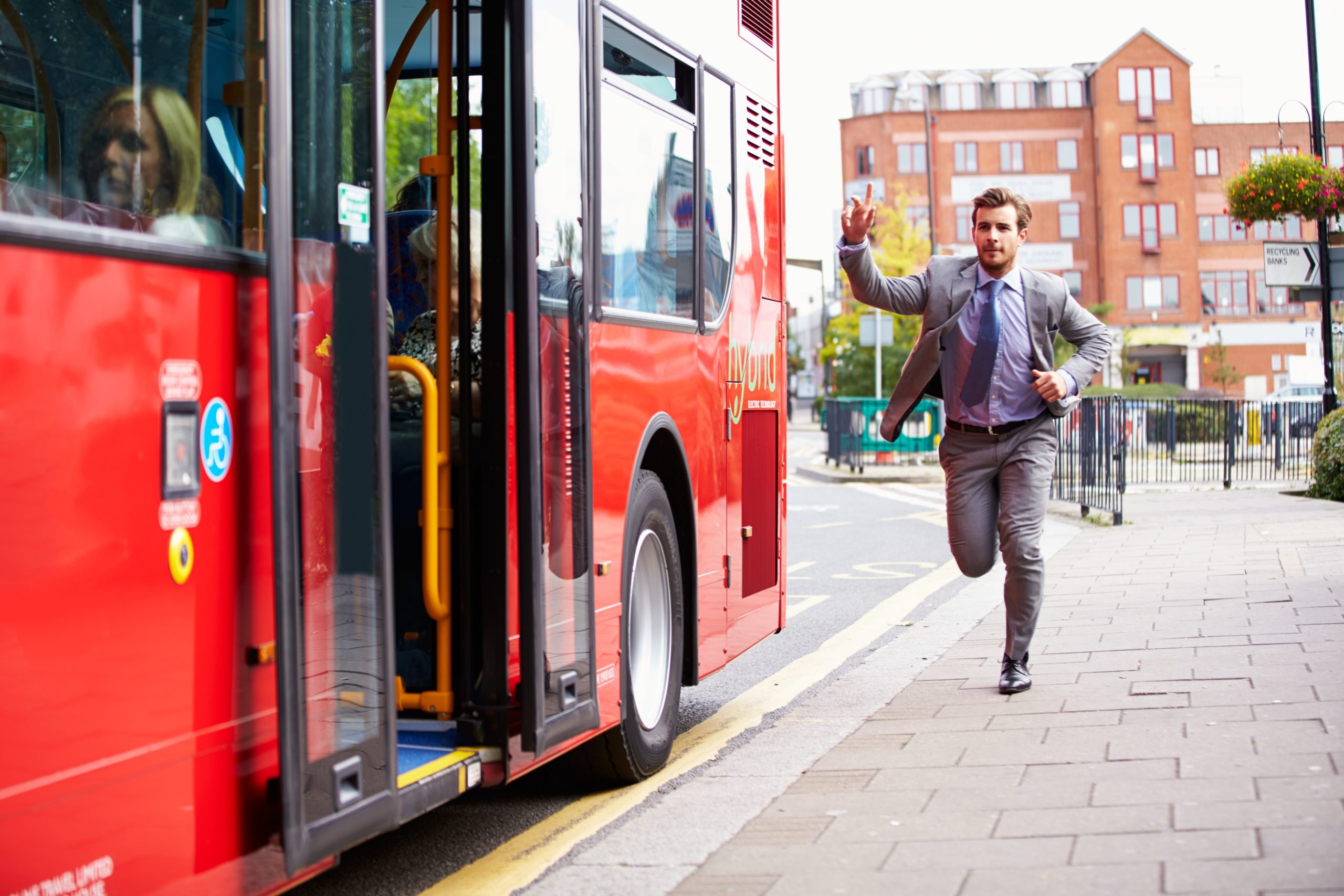
First impressions play a vital role in the success of any experience, particularly public transportation. One late bus or missed connection can negatively impact a rider’s decision to use transit in the future, and research shows that bus delays often cause people to give up on public transportation all together.
Long wait times are inconvenient and frustrating for any rider. After surveying current and former users of San Francisco’s Muni Transit system, researchers at University of California Berkeley found that the type of delay plays a role in riders’ dissatisfaction.
For example, being delayed at a transfer stop was considered significantly more frustrating than waiting at an origin stop. At origin stops, riders with real-time information can wait in their homes. “If you get stuck at a transfer stop—you get off of one bus and you’re waiting for another—you’re pretty much screwed,” says Andre Carrel, a graduate student and researcher at Berkeley. Providing passengers with trustworthy real-time information is one way to instill confidence that a connecting bus is on its way, and help riders relax during their wait.
Top Frustrations of Public Transit Riders
Long delays are just part of the puzzle; researchers found eight major factors that influence riders to abandon public transit. First, riders are most likely to give up on public transportation when they can place fault on the agency. Some examples of this include:
• Being delayed on board due to backed up transit vehicles or problems on the transit route downstream
• Long waits at transfer stops
• Missed departures due to wrong real-time transit information
• Being unable to board due to overcrowding
But riders tend to be more understanding when problems are perceived as outside of the agency’s control, for example:
• Being delayed on board due to emergency or mechanical failure
• Long waits at an origin stop
• Running to the stop but the bus/train pulls away
• Being delayed on board due to traffic
It is important to not only recognize these rider frustrations, but to learn how to combat them. Choosing a reliable real-time bus tracking system not only eliminates the fear of missed departures, but also allows riders to plan trips easily, reducing uncertainty and increasing confidence in their public transit system.
Safety and Public Transit
There are other factors that may prevent potential riders from using public transit. One not covered in the UC Berkeley survey is the perception of safety. And not simply related to the Covid pandemic, but overall safety, especially for women, who tend to make up the majority of bus transit riders. Another, Los Angeles Metro survey, that was conducted last year found that almost half of women riders had concerns about their personal safety on public transit.
Educating the Public About Transit
Finally, there is the reality that many commuters may just not understand the bus system and so never try to use it. As Springfield Missouri’s City Utilities Director of Transit Matt Crawford is quoted in this article, “We can take strides in our technology, maps and in our routing to make it easier for passengers. We can also educate people on how to ride the system. Once you learn how to navigate it things become easier.” While transit agencies continue to fight the battle for funding there may be opportunities to increase ridership by demonstrating to potential riders how easy it is to use their local bus systems. Mobile transit apps, like our TransLoc rider app, make it simple for riders to confidently use bus services – and give their bus systems the second chance they deserve.